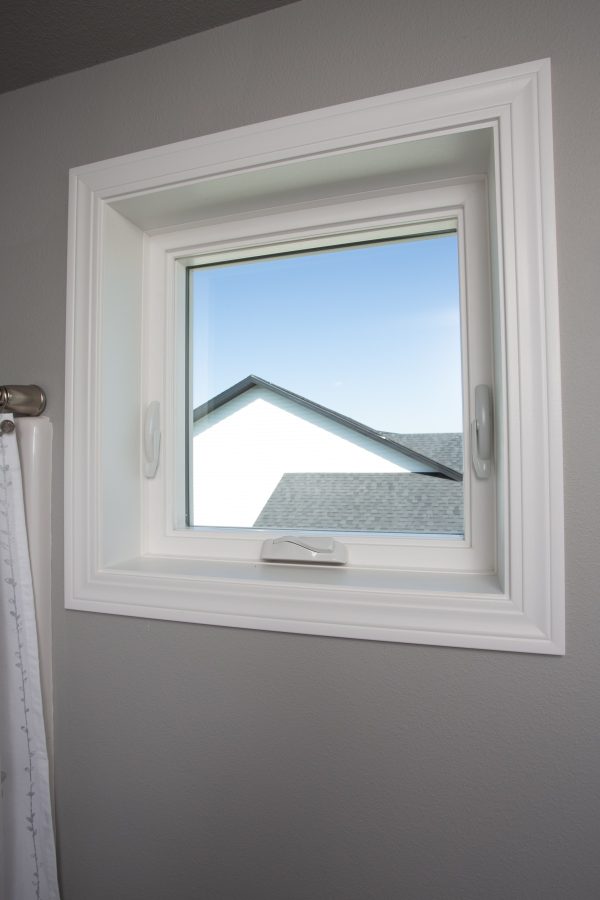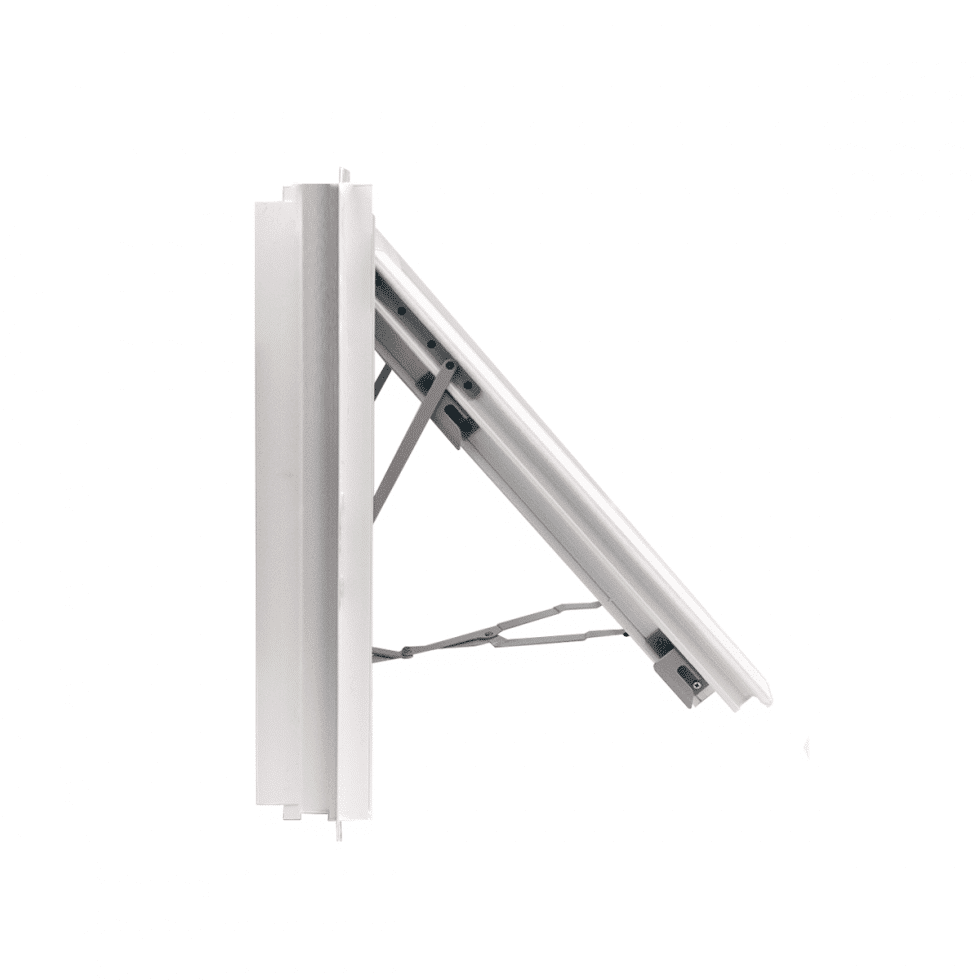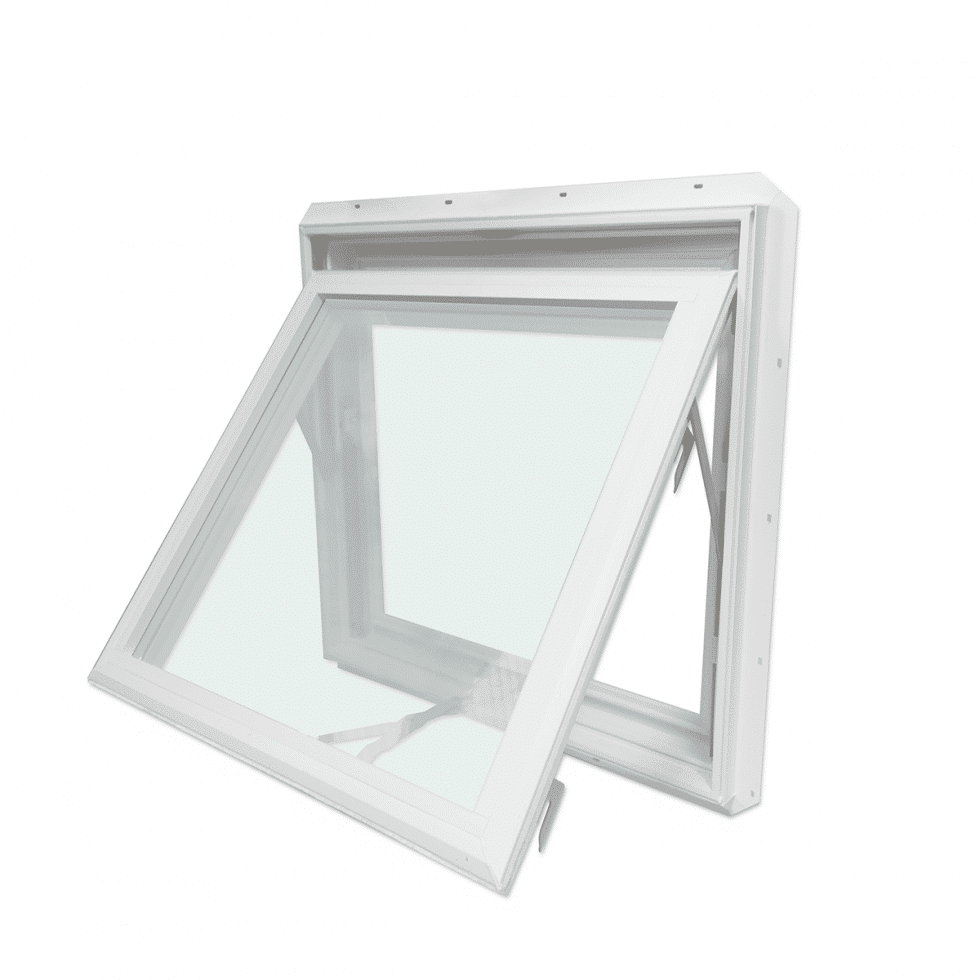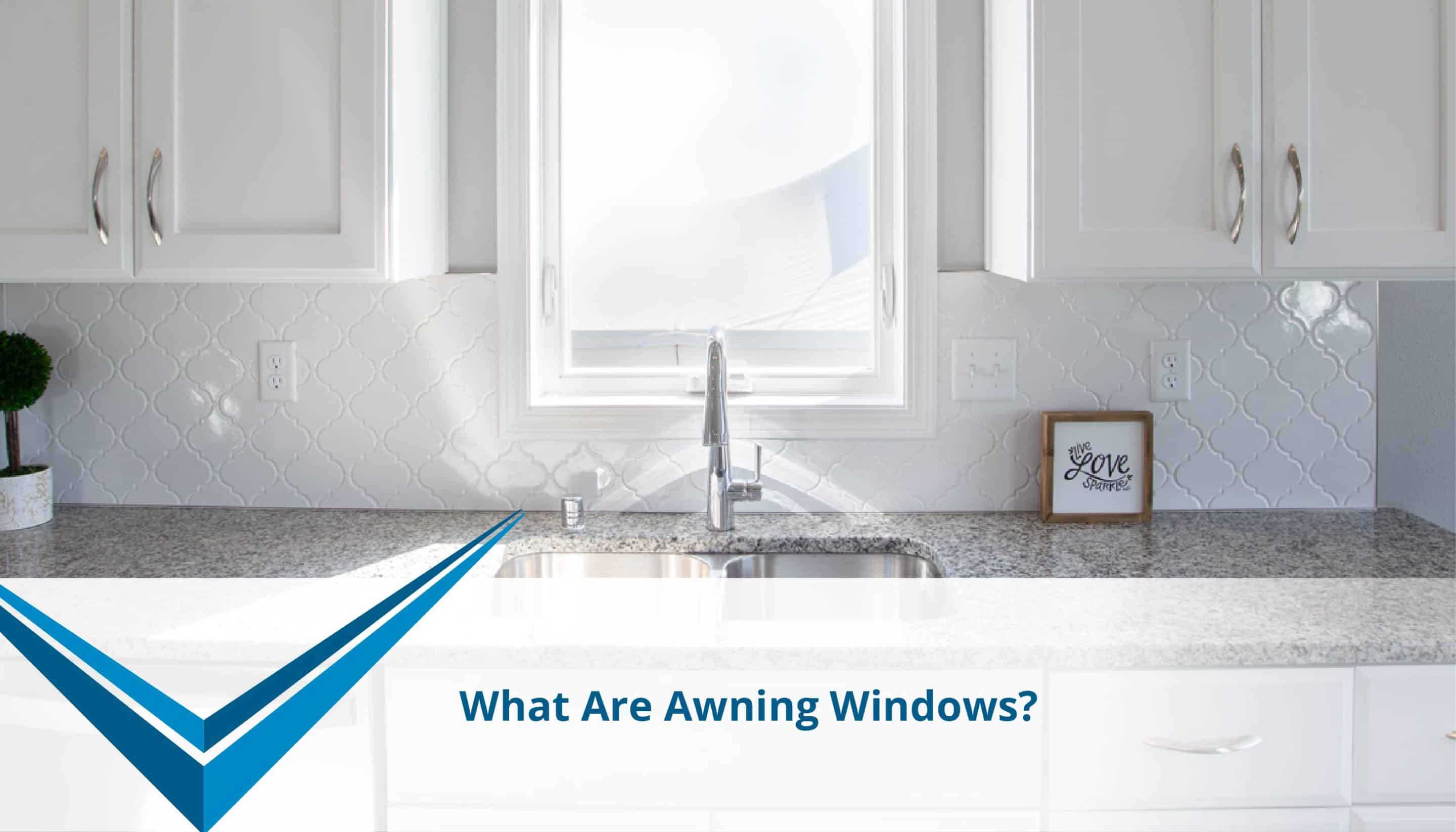With so many types of windows to choose from for your new construction, home remodel or commercial construction project, it’s easy to become overwhelmed by the options. Awning windows are one of many choices for functional and stylish ventilation, visibility and energy efficiency, and are favored in applications where moisture management and air flow are critical. In this blog, we’ll explain the basics of awning windows, cover their operation and advantages, and outline some key considerations to make when choosing awning windows for your project.

Understanding Awning Windows
An awning window is a window that is hinged at the top and opens outward from the bottom. It is designed to provide ventilation while offering protection from rain and direct sunlight. The name "awning" comes from the resemblance of the window's operation to that of a traditional awning, which can be extended from the side of a structure to provide shade and shelter.
Awning windows are typically manufactured of one or more panels of glass set within a frame. The hinge is located at the upper edge of the window, allowing it to pivot outward like a canopy or awning. This opening mechanism creates a sloped surface when the window is open, which helps to direct rainwater away from the interior of the building. The window is closed by simply pulling it downward, and the bottom edge is secured to the frame.
Awning windows date back to ancient Rome, and their primary function was much as it is in modern times: to provide ventilation while protecting the interiors from weather. Early versions of awning windows were little more than simple hinged frames with cloth or leather stretched over them to create the trademark awning-like effect. The concept evolved over time, rising in popularity during the Renaissance period. In the 19th and early 20th centuries, awning windows became regularly used in residential architecture, particularly in regions with high rainfall, as they offered a solution to the challenge of maintaining fresh air circulation even during inclement weather.
Today, technological advancements in materials, manufacturing, hardware, and engineering have given awning windows enhanced functionality and aesthetics. The use of weather-resistant materials, like durable metals and reinforced glass, provides greater protection against the elements. Innovative hinge and locking mechanisms have made awning windows more user-friendly and secure, allowing for easy operation and reliable sealing.
Awning windows are now used in both residential and commercial buildings because of their unique design and functional benefits. Awning windows are prized for the ventilation they can quickly and easily provide and are therefore often used in kitchens, bathrooms and bedrooms in residential applications. In commercial applications, awning windows are commonly used in restaurants and offices. These contemporary awning windows blend seamlessly with various architectural styles thanks to their sleek profiles and myriad customization options. These adaptations have transformed awning windows from their humble origins into sophisticated, energy-efficient, and aesthetically pleasing components of modern buildings.

Advantages of Awning Windows
Awning windows offer a suite of advantages that make them a preferred choice for homeowners and builders alike. Their primary advantage is their superior ventilation and airflow capabilities, even on rainy days. The unique top-hinged design allows awning windows to open outward from the bottom, forming a protective canopy that prevents rain from entering the home or building while still permitting fresh air circulation. Awning windows also contribute to a comfortable home environment by preventing direct sunlight from entering the interior when fully or partially open. This feature helps to manage the interior temperature of the home or building and reduce light glare.
Temperature control also factors into the energy efficiency of awning windows. When closed, the unique design of awning windows creates an airtight seal, minimizing heat exchange between the indoors and outdoors. This helps maintain a stable indoor temperature, reducing the need for excessive heating or cooling and lowering energy consumption and costs for homeowners. Builders and architects can also position awning windows strategically to allow them to harness natural ventilation, facilitating the flow of cool breezes and reducing the reliance on mechanical cooling systems during milder weather. This can not only provide energy savings for the homeowner, but also lowers the overall carbon footprint of the structure and contributes to a greener lifestyle for residents.
Finally, awning windows provide a high degree of design versatility, which makes them a top choice for architects and homeowners looking to imbue their structure with a distinct visual style. Awning windows seamlessly integrate and enhance the aesthetics of the building's exterior; their clean lines and modern profiles make them ideal for minimalist and modern designs, while their classic charm also suits more traditional structures. Awning windows are also easily combined with other window types, like fixed, casement, or even custom windows, to add visual interest to the facade. The ability to mix and match different window styles not only enhances the overall look of a building, but also allows for personalized configurations that meet specific functional and aesthetic preferences.

Factors to Consider When Choosing Awning Windows
If you’re considering awning windows for your home or commercial space, there are a few key factors to weigh. The climate and weather conditions of your region will guide the weather-proofing features to look for in your awning windows; in areas prone to heavy rains or strong winds, superior water-tightness and wind resistance will be paramount. Look for well-constructed awning windows with sturdy hinges and proper sealing to help prevent water infiltration. With that said, awning windows are suitable for a variety of climates, offering ventilation and protection against rain and direct sunlight in wetter regions and providing effective insulation and airflow in dryer ones.
You’ll also want to choose wisely when it comes to the materials for your awning windows. Each material — wood, vinyl, aluminum, fiberglass, etc. — comes with its own unique set of pros and cons.
- Wood gives windows a classic, elegant appearance, but requires more maintenance to prevent warping and rot.
- Vinyl is low-maintenance and energy-efficient, but may not have the same timeless aesthetic appeal.
- Aluminum offers durability and modern style, but it can be prone to heat transfer.
- Fiberglass combines strength and energy efficiency, making it a versatile choice.
Don’t forget to weigh your willingness to perform window maintenance, too: wood may need periodic staining and upkeep, while vinyl and fiberglass generally require less maintenance. Ultimately, the material you select should align with your style preferences, maintenance capabilities, and your local climate.
As a final consideration, assess the size and placement of your awning windows. The versatility of awning windows allows for ample customization, so you should be able to tailor your window size to your specific needs and preferences. Whether you require larger windows to maximize views or smaller ones for more discreet ventilation, awning windows can be adapted accordingly.
You may decide to position your awning windows to optimize their functionality by taking advantage of natural airflow. Placing awning windows higher on the wall can provide privacy without interrupting airflow, while positioning them lower can offer more direct ventilation. Thoughtful window placement not only enhances the aesthetic balance of the building's facade, but can also support the windows in serving their intended purpose effectively. Whether for cross-ventilation in bedrooms or as a means to ventilate moisture-prone areas like bathrooms and kitchens, strategic placement enhances the overall livability of your space.
Awning Windows at Vector Windows
Awning windows are a distinctive, practical and customizable window option that offers a range of benefits, including ventilation, rain protection, energy efficiency, and design versatility. Whether for residential or commercial applications, awning windows can be a valuable addition to any building project. Interested in learning more about adding awning windows to your new construction or home remodel? Contact Vector Windows today to connect with our expert window installation team. We’ll help you find the right awning windows for your needs and bring your project to life with integrity and professionalism!

